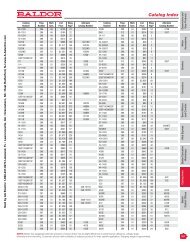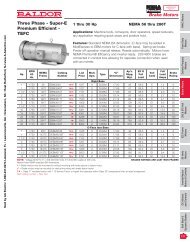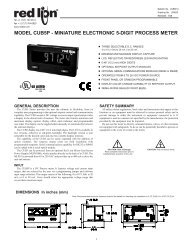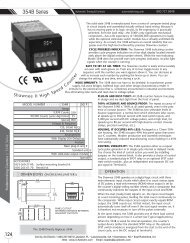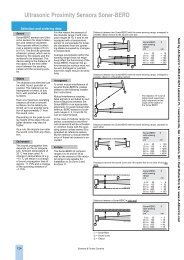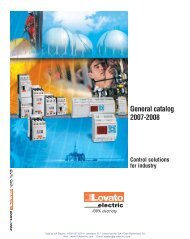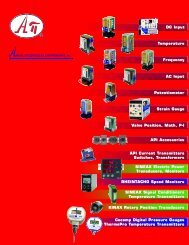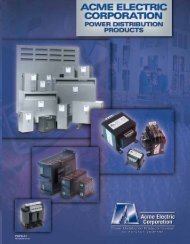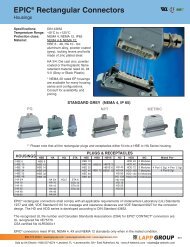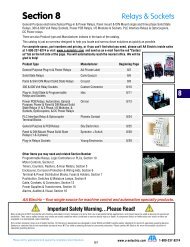G - AA Electric
G - AA Electric
G - AA Electric
You also want an ePaper? Increase the reach of your titles
YUMPU automatically turns print PDFs into web optimized ePapers that Google loves.
Optocoupler – Overview<br />
Optocoupler<br />
Sold by <strong>AA</strong> <strong>Electric</strong> 1-800-237-8274 Lakeland, FL • Lawrenceville, GA • Greensboro, NC • East Rutherford, NJ www.A-Aelectric.com<br />
2-pole DC output<br />
The 2-pole DC output can be compared<br />
with a conventional switch. In this version<br />
it does not matter where the load is located<br />
(in the output circuit), although the<br />
necessary output supply voltage must be<br />
available with the right polarity.<br />
Optocoupler modules are usually indicated<br />
with an output supply voltage range<br />
of, for example, 5 … 48 Vdc. The voltage<br />
should on no account ever be lower or<br />
higher than these values. The load current<br />
should not be higher than the stated maximum<br />
output current. If current constantly<br />
exceeds this value, the output stage will<br />
be destroyed.<br />
Derating diagrams show the relationship<br />
of output current to ambient temperature<br />
(indicated for the products on the following<br />
pages).<br />
2-pole AC output<br />
A special semiconductor module (TRIAC)<br />
is used for switching AC voltage in the<br />
output stage of the optocoupler. Here, as<br />
with the DC output, consideration must<br />
also be given to the key data such as<br />
voltage, frequency, maximum load current<br />
and ambient temperature.<br />
Use of the zero voltage switch ensures<br />
that the load is only switched on at the<br />
zero crossover of the voltage. The modules<br />
are always equipped with suitable<br />
protection elements (varistor, RC combination)<br />
as protection from non-permissible<br />
voltage peaks.<br />
3-pole DC output<br />
In order to function reliably, this kind of<br />
output level required potential-related output<br />
supply voltage with a single output. It<br />
is rated for either positive switching (joint<br />
reference potential: GND or 0V) or negative<br />
switching (joint reference potential:<br />
positive voltage pole).<br />
Standards<br />
The following standards are complied<br />
with:<br />
– EN 50 178:<br />
Electronic equipment for use in high<br />
current installations<br />
– DIN VDE 01206 part 101:<br />
Protection from dangerous body currents,<br />
basic requirements for “protective<br />
separation” in electrical equipment<br />
– DIN VDE 0884:<br />
Optoelectronic couplers for “protective<br />
separation”<br />
– DIN VDE 0109:<br />
Insulation coordination for equipment<br />
within low-voltage systems, including<br />
creepage and clearance distances for<br />
configured printed circuit boards<br />
Protection circuits<br />
All optocoupler modules have a protection<br />
circuit in the output (usually with a<br />
freewheel diode).<br />
The load side must be protected to prevent<br />
interference signals from coupling<br />
into other lines.<br />
Optocoupler<br />
K<br />
K.51



